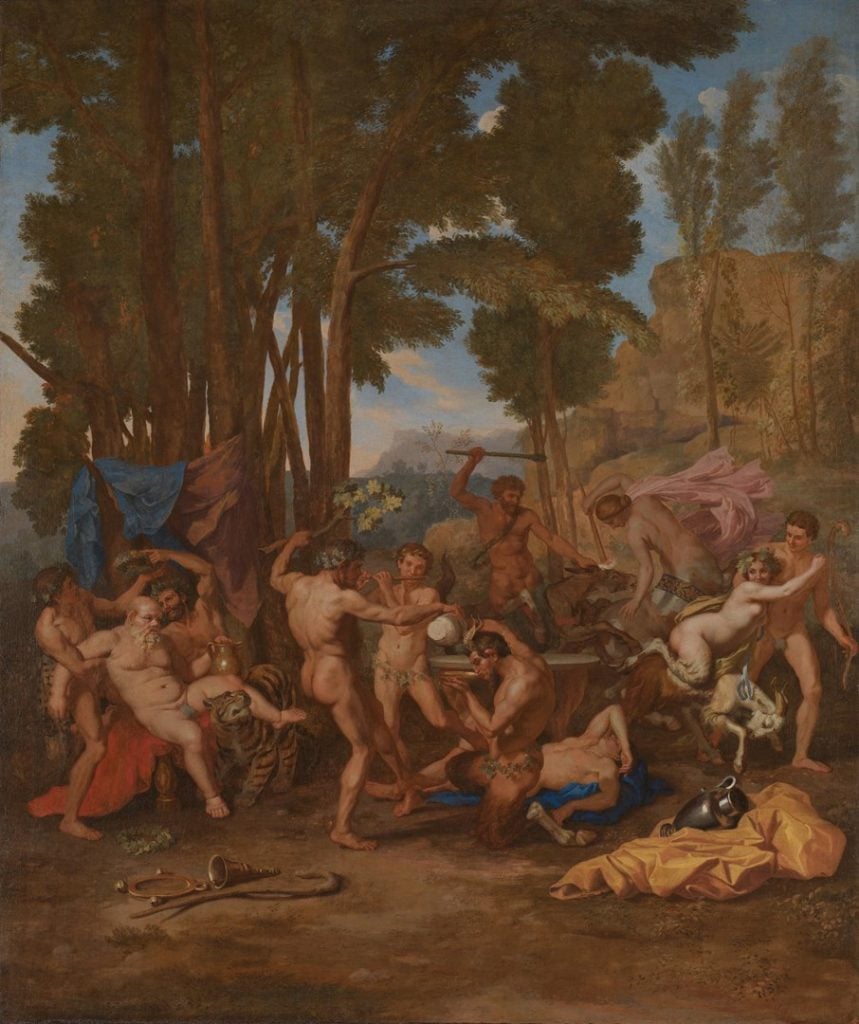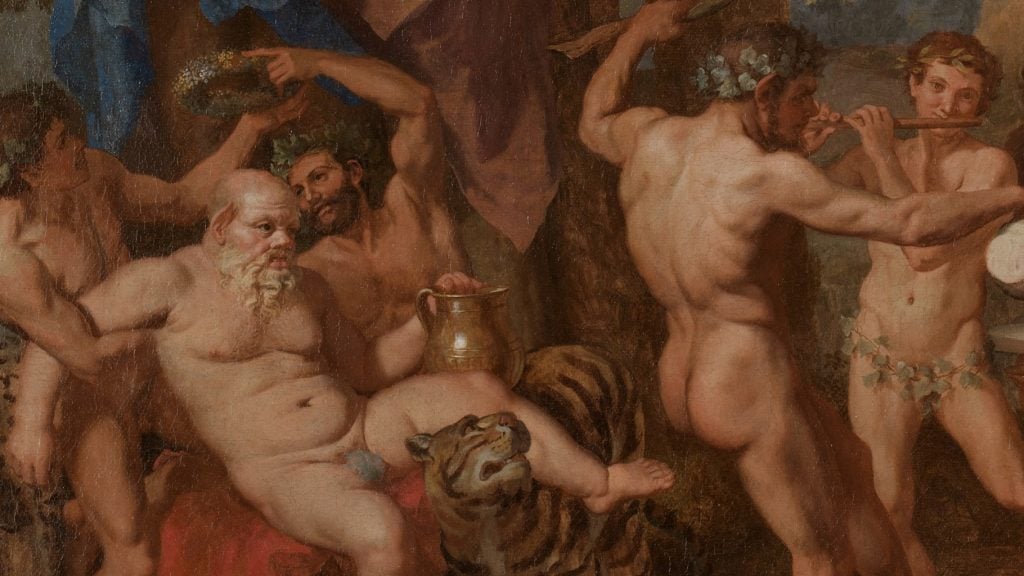Art History
A Bacchanalian Painting Once Thought to Be a Copy of a Poussin Has Been Reattributed to the French Master
Poussin’s "The Triumph of Silenus" will go on view at the National Gallery in London this fall.

Poussin’s "The Triumph of Silenus" will go on view at the National Gallery in London this fall.

Taylor Dafoe

For decades, a playful painting thought to be a facsimile of a Nicolas Poussin original sat in the storerooms of London’s National Gallery. But this week, the painting was reattributed to the French master himself—and will soon make its “triumphant” return to the museum’s walls.
Poussin’s The Triumph of Silenus, painted around 1637, depicts the titular Greek god of wine and drunkenness, several drinks deep into a truly wild night. So sloshed is the bald, naked Silenus that he’s held up by two men in the left register of the painting. He’s even using a live tiger as a footrest. A tiger!
Meanwhile, bacchanalia ensues around him: a shepherd whisks away a female satyr, two centaurs attack an ass; a man lays passed out while a nude flutist plays above him.

Silenus and his tiger in Nicolas Poussin’s The Triumph of Silenus, (c. 1637). © The National Gallery, London.
The work was one of three Triumph paintings commissioned in the 1630s by France’s Cardinal de Richelieu for his personal château. The other two, The Triumph of Pan and The Triumph of Bacchus, belong, respectively, to the National Gallery and the Nelson-Atkins Museum of Art in Kansas City.
“The three ‘Triumphs’ Poussin painted for Cardinal de Richelieu play such an important role in the artist’s career,” said Francesca Whitlum-Cooper, an associate curator at the National Gallery, in a statement. “It was on the strength of these works that he was summoned back to France to paint for the king, which is what ultimately led to his being seen as the founder of the French School of painting.”
The Triumph of Silenus was one of the first artworks to entire the National Gallery’s collection upon the institution’s founding in 1824. At the time it was believed to have been created by the artist. But by the mid-20th century, experts changed their tune, suggesting that the painting’s uneven surface and discolored varnish pointed to a copy. “After Nicolas Poussin,” was the label of attribution that accompanied it starting in 1946.
Now, recent analyses suggest that that line of thinking may have been off, too, according to an announcement from the National Gallery.
'The Triumph of Silenus' has long been considered a copy after Nicolas Poussin.
However, after recent conservation treatment and in-depth technical analysis, we've very excited to reveal that the painting is Poussin's lost original: https://t.co/SYbnX1LvLv pic.twitter.com/2YktbKkXyE
— National Gallery (@NationalGallery) April 29, 2021
Conservationists at the museum removed the varnish from the work, revealing Poussin’s original colors, while imaging techniques showed that the pigments used in the piece were similar in mixture to the artist’s two sister paintings. Additional research by the Nelson-Atkins Museum found that the canvas on all three artworks came from the same bolt.
In other words, it would have been nearly impossible for the artwork to have been painted by anyone but Poussin, the evidence suggests.
With a fresh new wall label, the painting will highlight an upcoming traveling exhibition examining the role of dance in the artist’s work—the first such show of its kind, according to the museum. “Poussin and the Dance,” is set to run from October 9 of this year through January of 2022 at the National Gallery, before moving on to the Getty Museum in Los Angeles.
“Poussin only painted a handful of these riotous dancing scenes, so it is fantastic to have rediscovered this original work in time for the first exhibition of his dance pictures,” added Whitlum-Cooper.